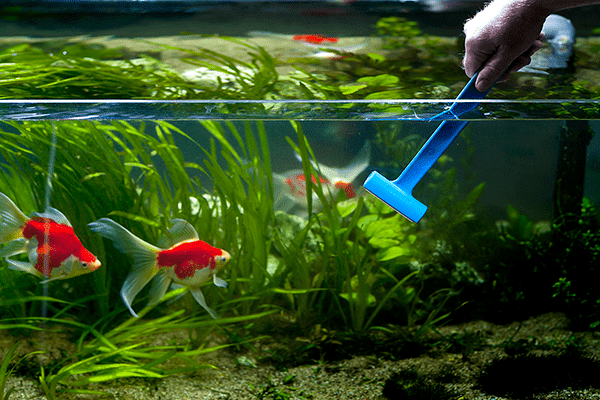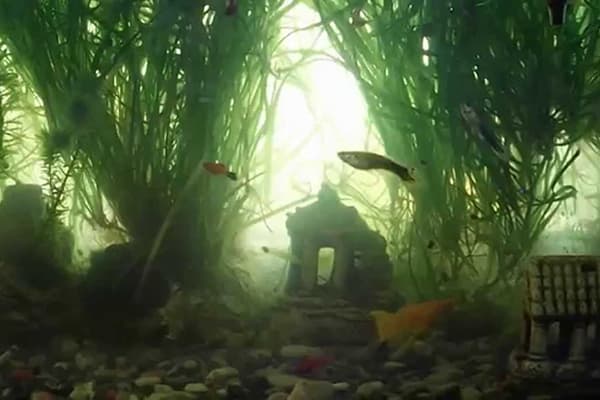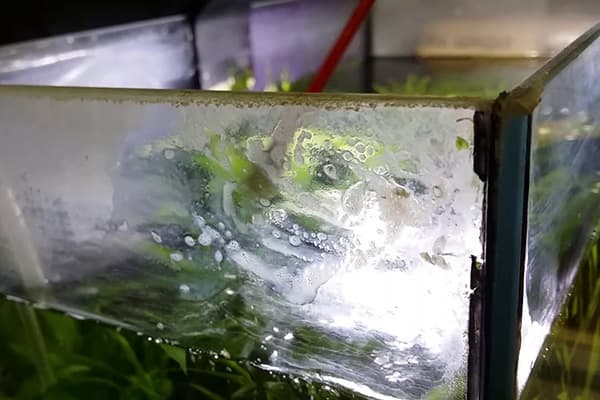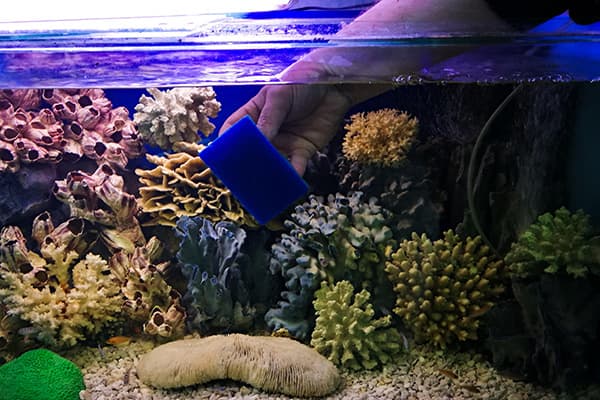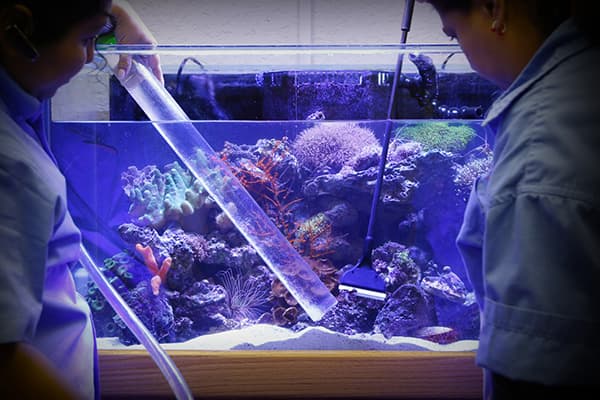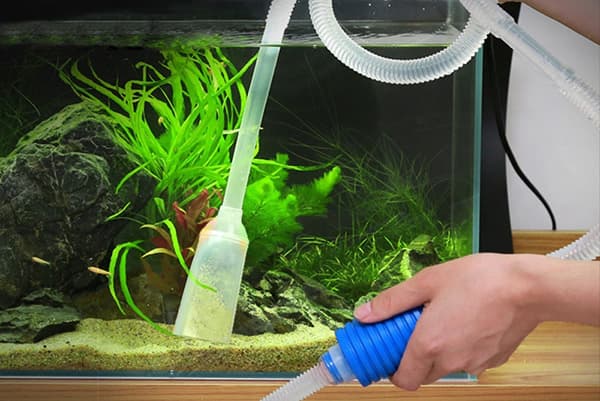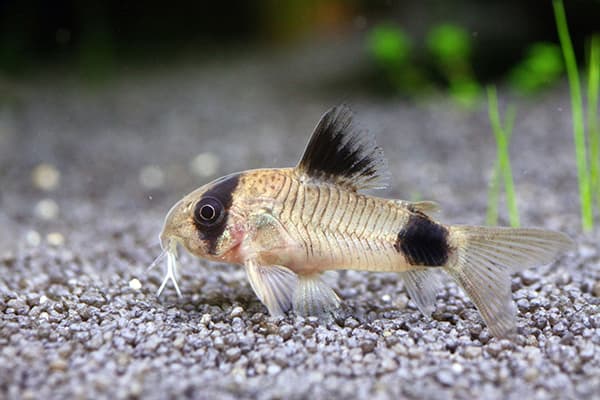How and how to wash a home aquarium and can it be cleaned without draining the water?
Content:
Each home aquarium, like any ecosystem, has its own biological balance. But such an ecosystem was created artificially, and therefore this balance must be maintained artificially, that is, properly caring for the aquarium and its contents. How often should it be washed? How can I clean the aquarium myself?
How often do you clean?
In general, any of our interventions for all aquarium animals is always stressful. Therefore, without special need to carry out cleaning is not necessary. It is recommended to clean the aquarium at least 2 times a month, but all individually.
What determines the frequency? From several factors:
- from the volume of the aquarium;
- on the number and size of its inhabitants;
- on the number and size of plants;
- from the volume of the feed to be poured.
Dirt appears inevitably - as a result of the natural activity of living creatures and vegetation, the growth of algae, the decomposition of food residues. The resulting compounds adversely affect the health of all aquarium residents, not to mention the sloppy appearance of a decorative home oasis.
To determine that the time has come to clean the dwelling of fish, you can on the following grounds:
- the water became a dull green hue;
- fish behave less actively;
- on the walls of the aquarium formed a green bloom visible with the naked eye;
- the slightest movement of the aquarium inhabitants at the bottom of the aquarium leads to the lifting of a dirty suspension.
But there is another important indicator for cleaning, which must be followed, even when everything looks fine. This is the testimony of a special tester that fixes the concentration of nitrates in water. If it exceeds the norm at the next measurement, it is time to wash the aquarium, although there may not be any visual reasons for this.
Before starting work
Before you start cleaning the aquarium, you need to prepare the necessary equipment. To do this, use:
- scrapers for removing plaque from the walls - with a metal blade (simple or magnetic) or plastic (for acrylic aquariums);
- soil siphon;
- washcloths;
- sponges;
- a bucket or a large bowl;
- a net (if you plan to wash with the fish sitting down).
The processing sequence is usually as follows:
- Clean the walls of the tank of sludge, protozoa, minor calcareous deposits;
- Wash existing decor (shells, pebbles, snags, grottoes).
- Caring for existing plants (if any) - if necessary.
- Clean the soil with a siphon - as needed.
- Drain some of the dirty water.
- Clean the filter - if necessary.
- Wash the walls outside.
- Add new water.
It should be remembered that general cleaning - with fish being planted out, completely replacing water and using special detergents - is carried out quite rarely: only in case of any epidemic or when it is necessary to remove large amounts of limestone. The rest of the time, they usually spend a simple regular cleaning - without planting animals, without draining all the water, and in no case using detergent chemistry: it can be dangerous for fish.
How to wash an aquarium from limescale?
Most often, owners encounter an attack of algae and bacteria or a very slight formation of lime stains.In this case, it is recommended to simply mechanically remove dirty deposits with a scraper, washcloth or household sponge, having previously disconnected all electrical appliances serving the aquarium, except the filter. Such manipulations can be carried out in the presence of fish.
If it was not possible to wash everything the first time, you can use a scraper with a metal blade or a clerical knife. But it should be remembered that on the acrylic surface they can leave scratches, so it is necessary to act extremely carefully.
Do not use sponges used in the kitchen for aquarium work. They are inhabited by many microorganisms. In addition, they are usually saturated with fats from the dishes, and all this does not contribute to the creation of safe microflora in the home pond.
However, it also happens that deposits of calcium salts are formed in large quantities. The reason for this may be:
- lack or insufficient number of aquarium plants;
- a systematic excess of feed;
- the use of unsteady water;
- poor quality of the filter (or its severe pollution);
- irregular washing of the aquarium.
In this case, you will have to carry out general work by relocating the fish with the help of a net to another tank and draining the water.
How to clean home water from limescale? There are many industrial detergents designed specifically for this purpose. They can be purchased at specialized pet stores.
And you can resort to the help of folk remedies that are available at almost any housewife's hands, and try one of the following formulations:
- lemon juice;
- a solution of a glass of water and 20 grams of citric acid;
- a solution of a tablespoon of vinegar (concentration 9%) and a glass of water;
- a mixture of ammonia with water (working ratio - 1:10);
- hydrogen peroxide diluted with water (for half a glass of water - 30 ml of peroxide).
These compounds are most conveniently applied to the contaminants using a spray gun (such always have florists). Further, the funds should work for a while, it depends on the scale and density of the plaque. Then the deposits are cleaned with an old toothbrush, a hard sponge or a metal scraper.
The final stage is a thorough multiple washing of all internal surfaces of the treated container.
If it is necessary to wash the decor, remove all elements and wash them with a sponge or brush, without using any chemicals.
How to clean soil in an aquarium?
The need for cleaning the soil arises if suspensions rise from it when the fish swim or if the walls and work with plants has been cleaned (when they are cut, weed or completely removed with roots). For this work, at home, they usually use a special siphon to clean the aquarium soil.
If a large fish lives in the aquarium and there is no living vegetation, you will have to siphon the soil every week. If there are a lot of plants, and the living creature is small and does not densely inhabit the reservoir, such a need arises much less often. If only plants or shrimp live here, it is better not to touch the soil at all, so as not to harm small animals and roots.
How to clean? One end of the siphon tube is lowered into a large bucket, the second is brought closer to the pebbles, sand and everything that is in the lower layer of the aquarium. This is not a primer in the direct sense of the word, but in everyday life these fillers are usually called so. The real soil (in which the plants are planted) is processed or changed very rarely - during general cleaning.
So, you need to carefully drive the tube along the upper layer of soil, while working with a pump. All garbage and sewage will merge into a bucket. In principle, it is possible to lower the second end of the hose directly into the drain of the sewer, if among the aquarium inhabitants there are no very small ones that can inadvertently fall into the hose.
How to clean the bottom of the aquarium without draining the water?
To do this, you need a special flat nozzle that allows you to tidy up the soil more accurately.A tube with such a nozzle must be lowered to the bottom and driven, slightly raising the soil, while working with a pump. Dirt from the lower layer will gradually collect and merge, and the excited soil will fall back after a while. Especially carefully you need to circumvent the places of floristic planting so as not to seed the roots.
If there are no living plants and only a layer of sand is poured on the bottom, it can be cleaned without a siphon using an ordinary hose. The procedure is similar (a medical pear is suitable instead of a pump), with the only difference being that the sand will also merge in large quantities. Rinse it thoroughly and return it back.
When cleaning, try not to actively manipulate your hands in the aquarium, because this is always stress for its timid inhabitants.
During cleaning, part of the water is removed through a siphon. It must be refilled with a new one - defended for several days.
We populate the assistants
To clean less often, you can settle in the aquarium of natural orderlies who help cleanse the water and the walls of a home reservoir. This will be done, for example, by ordinary guppies, as well as swordsmen, goldfish, pecilia, ancistruses, catfish. The structure of their mouth allows you to capture and eat small algae and plaque from the walls.
But not only these fish clean their homes. Snails and shrimps can help them. True, snails are very curious creatures, and if the aquarium is open from above, they will periodically drop out of it (so it is better to purchase such residents for closed containers).
So, in order to maintain your aquatic pets in a cheerful and healthy state, it is important to properly care for the aquarium. If you use live assistants, then cleaning the tank and disturbing the aquarium animals will be less necessary.
